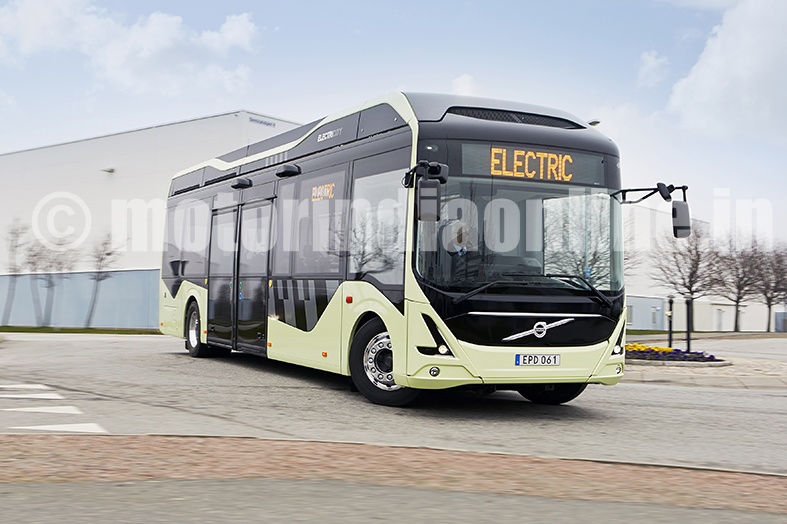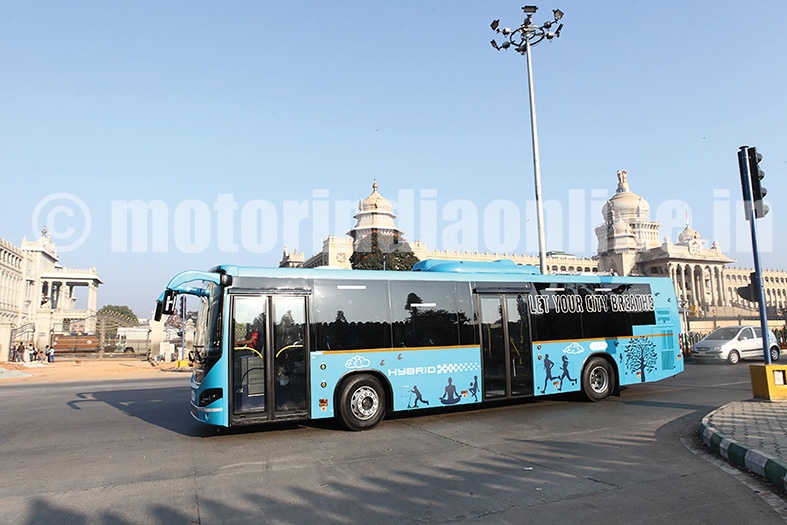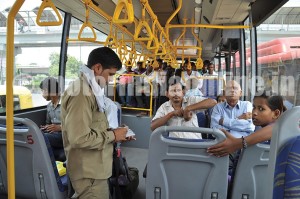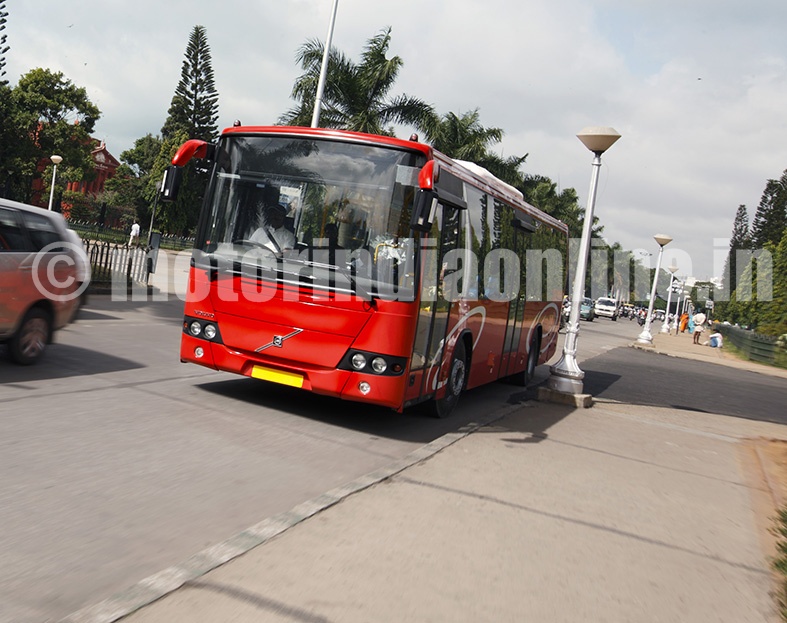Volvo Buses has been instrumental in transforming the public transport sector in India since its market entry early this millennium. While Volvo redefined long-distance road transport with its intercity coaches, its city buses were an instant hit with commuters, motivating people to switch over from private cars to public transport without much hassle. Having delivered India’s first hybrid bus to Navi Mumbai, the premium segment leader continues to drive change in the country with its electromobility mission which is being excellently executed at the global level too. We spoke to Mr. VRV Sriprasad, Managing Director – South Asia, Volvo Bus Corporation, about Volvo’s role in the development of public transport in India and how it plans to keep up its commitment and drive growth further.
Excerpts:
The new Government seems to mean business with its focus on improving public transportation, and more so with the Smart Cities scheme. What does this mean for Volvo Buses and how could you contribute to the Government’s growth plans?
The Government effort to promote the concept of public transport through the Smart Cities scheme is a welcome step. The scheme envisages making public transport the mainstay of cities across India, both urbanised and those developing. The focus is on providing bus-based public transport in order to motivate people to leave their personal vehicles. If implemented well, and adopted by larger population, we can for sure see a better quality of life in our cities.
Volvo Buses has actively partnered various city transport authorities since we first introduced our modern city bus in India. We believe Volvo Buses has acted as a catalyst to bringing in change in the public transport landscape in the country. Our journey thus far can be best described as transformational, which on the one hand changed mind-sets and cleared doubts, and on the other helped build confidence and capabilities in the bus industry.
Volvo Buses continues to explore and implement viable urban mobility solutions, while the concept of City Mobility continues to rapidly evolve. City transport authorities are making considerable efforts to make bus-based public transport an attractive option for people.
Besides Smart Cities, the Government has also announced the AMRUT and FAME India Schemes. While AMRUT will provide funding to cities for purchasing city buses in general, the FAME India scheme is the first-of-its-kind endeavour to incentivise hybrid and electric vehicles for the manufacturers.
We have already taken the first step in the electromobility space by launching the first hybrid bus in India, which will be delivered to NMMT. The company already has 1,500 city buses operating in 34 cities across the country. In the larger picture, Volvo Buses is well poised to meet the future demand in India, both for high-performance city buses that meet new emission norms and the latest electromobility solutions.
Volvo Buses is committed to play its role in supporting modernization of Indian cities by providing complete and sustainable transport solutions.
With your entry into India over a decade back, Volvo Buses transformed the way the Indian bus marked functioned. Staying focused on the public transport sector, what do you think have been the three most important contributions/changes Volvo has brought to public transport in India? Looking ahead, what more do you intend to do?
As mentioned earlier, we believe that Volvo Buses acted as a catalyst to bringing in change in India’s public transport landscape. There are several changes that came with our advent in the country. I would list the following as the key changes:
* The bus manufacturing industry on the whole has enhanced its capabilities and competencies to meet the requirements of modern public transport solutions in our cities. Even in terms of technology development and adoption, the industry on the whole has advanced considerably in the last decade
* The Central Government, State Governments and city transport authorities have realised the benefits of bus-based public transport system. While investments are being made on alternate solutions like metro, buses continue to be the backbone of public transport system. The proof lies in the success of the erstwhile JnNURM Scheme, which motivated cities across the country to implement public transport system and purchase buses that help mobility. Of course, the other benefits such as reduction in pollution, road congestion and savings on fuel consumption add to the case
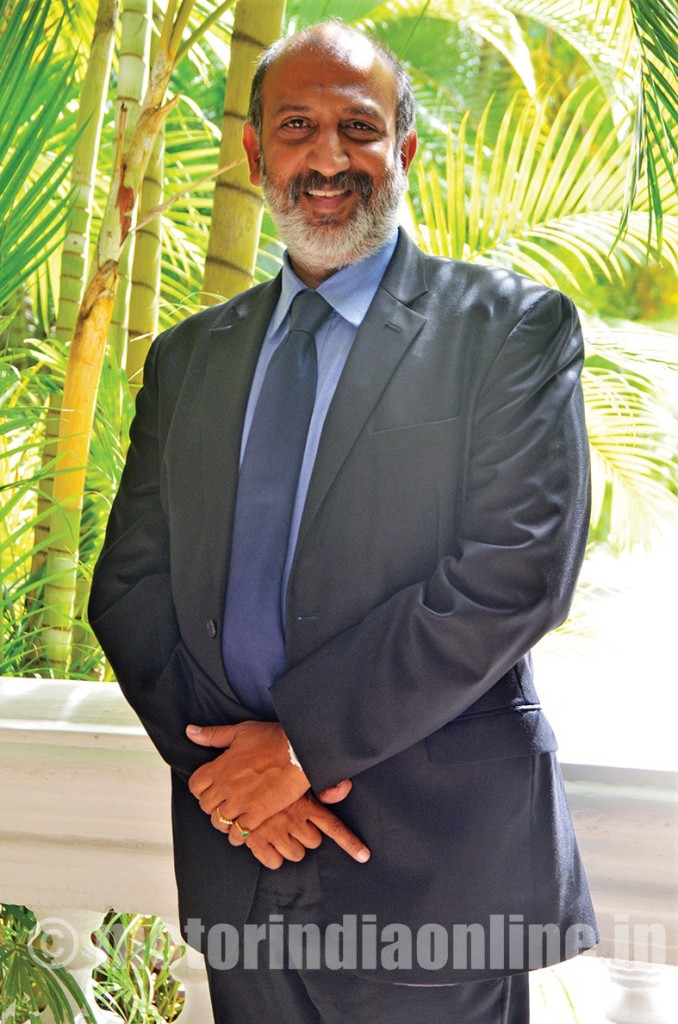
* The Government of India’s push for clean technology is one that will revolutionise the public transport landscape in the years to come. Volvo Buses has become the first bus manufacturer to deliver hybrid city bus in the country
* The mind-set of people towards public transport itself has evolved significantly. Today there is greater awareness than before of the need for public transport, and we are witnessing a maturing thought process wherein people are opting for public transport over their personal vehicles. But there is still a long way to go here
So, while we say Volvo Buses having played the role of a catalyst, the change that has come by is also because of the collective and collaborative approach of all stakeholders, be it manufacturers, policy makers, city transport authorities, etc. The credit goes to all of them.
At Volvo Buses we see that precedent is set for further development of the Indian bus industry. Electromobility being the most contextual example, public transport continues to be a key aspect in the Central Government’s Smart Cities initiative. We see this as the beginning of a promising phase of evolution of public transport in India and we are looking forward to it.
Can you share the total population of Volvo city buses across India at present? Can we also have a state-wise break-up of the same?
Since 2001, Volvo has sold over 5,600 buses in India, including nearly 1,500 city buses.
About 4,000 Volvo inter-city coaches operating on key routes connect over 80 destinations across the country today. The visibility and awareness of the Volvo brand in India is a reality owing to our coaches. The introduction of our first bus way back in 2001 coincided with the emergence of India as a global IT hub. This meant that many people were aspiring to a bus travel experience similar to what they would have experienced in some of the developed countries. Since then Brand Volvo became synonymous with “bus travel” in India.
In the arena of city transport, Volvo has a position unique to itself. Today, 34 cities are operating Volvo city buses. Volvo Buses is the only company to provide city buses as per the Urban Bus Specifications scheme to all these cities. Hearteningly, we find tier-II cities like Solapur, Puducherry, Vizag and Guwahati, among others, have also stepped forward to acquire our city buses. This development resonates well with the Government’s vision to develop 100 smart cities.
There is a lot of discussion on sustainable mobility and use of alternative fuels. Hybrid, electric and bio-fuels seem to be the talk of the town. Volvo has taken the first real step forward in this aspect by recently launching the country’s first hybrid bus. What, according to you, would be an ideal public transportation system for an urban city in terms of using alternative mobility?
Globally, Volvo has successfully demonstrated its electro mobility programme. For India, we are leveraging the experience gained from over 7,000 hybrids, electric hybrids and full electric buses operating in more than 20 countries, with India joining this list in 2016.
At present, the awareness levels about hybrid and electric vehicles are quite high in India. This has helped in our decision to introduce our hybrid city bus here. But awareness building is a continuous process and we continue raising the level of knowledge among all relevant stakeholders. We are also engaging with policy makers to bring advanced electromobility solutions like electric hybrid and full electric buses in the future.
The FAME India scheme has provided the much-needed impetus for Volvo Buses to start with the hybrid buses introduction. We were always clear in articulating that Volvo had the capability and proof that the hybrid technology can be deployed commercially. The effect of the FAME India and AMRUT schemes can help spread this concept of sustainable urban mobility solution to many cities in the country.
The ideal situation would be to have electromobility solutions deployed throughout the cities. Therein the full electric buses can be operated in the heart of the city, with electric hybrid and full hybrid buses plying on the peripheral routes going up to the outer urban limits. Volvo Buses’ Electromobility programme is based on this model of operations.
And we are convinced that this will be fully operational in the years to come. Of course, the precedent will be set by the developed nations. India can also adapt this mode successfully, though it would take a little more time.
How important and effective would BRT systems be for India? The Government does not seem to have got it right in the BRT attempts. Where are we going wrong? What should we be doing to run successful BRT systems which would prove a win-win model for commuters and for the Government?
Before commenting on Bus Rapid Transit (BRT) in the Indian context, I would like to touch upon Volvo’s global expertise in this area. We have been the leader in BRT development since the first systems were constructed in Curitiba at the end of the 1970s.
It is today the most flexible and cost-efficient manner to resolve the need for public transportation in cities. A BRT system is able to transport an equal number of passengers as a subway or a tram network. The difference is that it is quicker to build a BRT system. It is far less expensive too. It may entail investment costs that are 20 times lower than a subway and ten times lower than a tram network. Operating costs are also much lower.
Now, Volvo is working on adopting Electromobility solutions in BRT systems, which will address the current concerns of rising vehicular emissions in cities across the world. This is a winning combination with clear benefits, such as:
* 30% faster than the average bus
* 30% lower emissions than the average bus
* 50% safer than the average bus
* 10 times more cost-efficient than rail
Coming to India, we do have some examples such as Ahmedabad, Indore and Pune wherein BRT systems are in operation. And they are quite successful. However, the essence of BRT is that it benefits the more urbanised locations with operations running through the main city area. New Delhi is the oft-repeated example of failure of BRT corridor. But it was due to lack of political will and gaps in implementation, and nothing against the concept itself.
In our discussions with urban planners and BRT experts, it was clear that the peak hour passenger traffic in the BRT corridors in Delhi were the highest. This shows that while there was a huge outcry against BRT in the city, there are people who preferred to travel in the corridor buses.
To make BRT successful in India, to me the solution lies in effective planning and implementation, of course with political support.
In your view, what are the three most important steps/decisions the Government should take in order to facilitate public transport development in the country and ensuring it as a sustainable approach?
Initiatives have already been taken by the Government to make public transport the preferred option for people. The Smart Cities Concept, FAME India Scheme and the AMRUT Scheme are all initiatives in the right direction.
I feel that these measures by themselves can immensely benefit cities in India. At the same time people should support by opting for public transport over their personal vehicles. Unless the mind-set changes, the systems and solutions cannot become sustainable. So it has to be a proactive approach from both sides.
Volvo and the bus industry are capable of supporting these initiatives.
